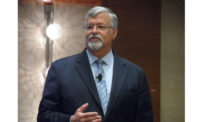The major HVAC manufacturers saw higher sales and revenues in the third quarter thanks to continued strong demand and the effects of several price hikes. Margins were another matter. Increased expenses for materials and parts, along with higher labor costs, all had an impact. The questions going forward are how long will costs remain elevated due to supply chain issues and will demand remain high?
For example, Lennox International reported record third-quarter revenue of $1.06 billion, but the company took hits of approximately $75 million to revenue and $25 million to operating profit from supply chain issues. This was despite four price increases this year. Trane Technologies also reported record revenue in the third quarter, but margins declined by more than 50 basis points.
Contractors have been able to absorb these price increases to an extent thanks to strong demand from consumers. The shift to work from home and government stimulus boosted this demand much higher than expected when the pandemic started. That demand continued through the third quarter, and should remain in part because of the supply shortage, but manufacturers are seeing signs of moderation.
That’s true for both replacements and new-home construction. David Gitlin, CEO of Carrier Global Corp., said new-home builders delayed several projects due to supply constraints in a range of materials and supplies. Carrier’s residential backlog was 70% higher in the third quarter than it was a year ago. Gitlin said there has been a year-over-year decline in residential equipment demand, although it’s hard to compare this year’s performance to 2020.
CEO, Lennox International
Commercial Business Starts to Return
The good news for manufacturers comes from the commercial side of the business. Gitlin said Carrier received more orders in these segments, with schools and warehouses being especially robust. He said restaurants and retailers are also coming back to the market. As a result, the HVAC manufacturers are becoming a reopening play for investors.
Modine Manufacturing Co. reported higher commercial sales in the third quarter, driven by higher sales of heating and ventilation products. Data center demand was especially strong. Still, operating income declined $3.5 million from the prior year to $10 million. The decrease was primarily due to higher material prices and labor costs.
The same supply issues that slowed residential deliveries affected commercial production. CEO Todd Bluedorn said Lennox’s commercial business was hit hard by an outbreak of COVID among workers. That added to the issues created by the supply chain.
"Looking ahead for the company overall, demand remains strong,” Bluedorn said. “But global supply chain bottlenecks and shortages are not expected to be resolved soon, and COVID-19 adds more complexity to labor and production disruptions.”
HVAC executives are looking at ways to ease these constraints now and going forward. Gitlin said Carrier created a supply chain war room that operates 24 hours a day. He said Carrier staff have been on-site at suppliers and the company is using digital tools to stay better connected with customers.
“We are tackling this situation both tactically and strategically,” Gitlin said.
Seeking More Sources for Supplies
Emerson CEO Lal Karsanbhai said his company ramped up the use of secondary sources and qualified alternative suppliers. Emerson redesigned products to utilize available components and redirect freight to avoid backlogged ports. To offset the labor shortage, Emerson raised wages, shifted production to factories with a more stable workforce, and accelerated the deployment of automation.

EXCITING AND CHALLENGING: Emerson CEO Lal Karsanbhai said the company is looking at ways to spread risk geographically. (Courtesy of Emerson)
Attracting new workers was only half the battle. Karsanbhai said high turnover also created issues at plants. That’s another reason why manufacturers are looking at more automation. Gitlin said Carrier aims for 6 million automated man-hours by 2026.
Gitlin said Carrier is looking at ways of making its supply chain more resilient. This includes minimizing the single points of failure. Gitlin said Carrier executives are targeting having dual sources for 75% of the needed components.
China, which was provided manufacturing manpower for the past two decades, was struck by a range of problems, including COVID outbreaks and industrial power outages. Gitlin said Carrier was paying 10 times as much to get a container out of China at it was a year ago. Karsanbhai said the pandemic now has manufacturers looking at spreading risk in different geographic areas.
“These dynamics show how important regionalization is,” he said.
Even U.S. Factories Faced Issues
As Lennox shows, the answer isn’t just moving production back to the United States. Aaon Inc. reported a decline in unit volume of around 11%. Company executives attributed the decline to a very tight labor market that slowed plans to ramp up production. While the company’s overall headcount grew during the year, that was due to getting its facility in Longview, Texas, up to speed. The number of workers at Aaon’s plant in Tulsa, Oklahoma, was slightly down year over year. Also, the Longview plant was struck by a COVID outbreak that reduced the production of coils that were needed to complete units in Tulsa.
HVAC executives agree that these issues will work themselves out eventually and that the HVAC industry will benefit from long-term trends. These include a move to improved IAQ and decarbonization. Gitlin said more than 30% of residential heating sales in North America are heat pumps.
Karsanbhai called the past year’s environment both challenging and rewarding. All the executives went out of their way during their earnings reports to praise their staff for their hard work in challenging times.
“I am proud of the work our team is doing to meet customer needs while managing significant headwinds from persistent material inflation and tight supply chain dynamics,” said Dave Regnery, CEO of Trane Technologies.








